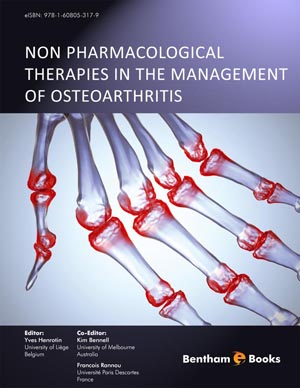Abstract
Acupuncture is recommended as a non-pharmacological treatment option for patients with knee and hip osteoarthritis (OA). Acupuncture is a Chinese philosophy which aims to restore the body to normal health. The explained mechanisms consider that acupuncture nociceptive pathways are essential for acupuncture analgesia, which is mediated by different endogenous neurotransmitters, such as enkephalin and dynorphin, and probably decreases the local inflammatory response via N-methyl-daspartate receptors. Acupuncture increases pain threshold gradually, with a peak effect at 20-40 min; a tolerance mediated by choleystokinin octapeptide could be observed if a prolonged period of acupuncture stimulation is performed. Immunocytochemistry and imaging studies indicate that both pain and acupuncture activate the hypothalamicpituitary-adrenocortical axis.
The literature review shows that clinical effects are small when acupuncture is compared with sham for treating OA patients; however, few if any other commonly used treatments for OA meet the threshold for clinically relevant benefits. On the other hand, acupuncture exceeds the thresholds for clinical relevance when compared with a waiting list control and with some other active treatment control, but the absence of sham treatment as a control suggests that benefits are primarily due to expectation or placebo effects.
Keywords: Osteoarthritis, acupuncture, pain.

















